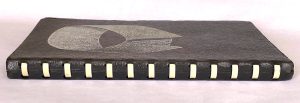Patri’s White Collar and the missing Lewis Epilogue???
Is the John L. Lewis epilogue missing from your copy of Patri’s wordless novel, White Collar?
Dealers, when listing White Collar, will sometimes indicate whether their copy has (or lacks) the Lewis epilogue. The reason for raising this is not always clear.
The rationale given to me is that the 1st edition of White Collar was bound with a metal comb and for the 2nd edition, with a double wire loop, similar to a comb binding. Lewis, at a later date, alienated certain sectors of the labor movement. For those no longer wanting anything to do with Lewis, the comb bindings made it was easy to rip out the Lewis Epilogue with no apparent damage to the book.
But did that really happen?
Background
John L. Lewis (1880 – 1969) was a powerhouse in organized labour. He served as president of the United Mine Workers of America (UMW) from 1920 to 1960. In 1935 he formed a committee to promote the organization of workers on an industry-wide basis at a time when the American Federation of Labor (AFL) restricted membership to craft unions eg. the machinists but not the janitorial staff cleaning the shops. In 1938 the entire committee was expelled from the AFL and Lewis went on to form the Congress of Industrial Organizations (CIO).
In October of 1942, Lewis withdrew the UMW from the CIO. Six months later, he substantively violated organized labor’s no-strike pledge, spurring President Roosevelt to seize the mines.The strike damaged the public’s perception of organized labor generally and Lewis specifically; the Gallup poll of June 1943 showed 87% disapproval of Lewis. Some have asserted that Lewis’ actions produced shortages which crippled wartime production in the defence industry (paraphrased from Wikipedia).
The Rationale doesn’t stand
It is true the 1st or 2nd editions had metal bindings but they did not have the Lewis Epilogue.
Patri was discouraged that his novel was only going to people who already agreed with the concepts he was advancing. In letters between Patri and the artist, Rockwell Kent, Kent wrote:
“It seems to me that an inexpensive trade edition would have a wide appeal . . . . .Such an edition should have a different introduction from the limited one which is intended only for people who are already convinced of your thesis.”15
FAECT’s support made this change possible; in 1941 Patri was able to print a third edition of one thousand copies and, by using less expensive paper, lower the price from $5 to $ 1.25. And at Kent’s urging, he altered the introduction of the graphic novel to address a new union readership. The 1941 reprint featured a preface by Kent and an afterword by John Lewis (emphasis added), and it exchanged the earlier editions’ more personal dedication (“to the man who told me this story”) for a sharply political manifesto (“to the great progressive labor movement”). Ott p.889
Ott, John; Graphic Consciousness: The Visual Cultures of Integrated Industrial Unions at Midcentury; American Quarterly Vol. 66, No. 4 (December 2014), pp. 883-917
Pisani and the Lewis Epilogue
Pisani published the 3rd edition in 1941, which contained the Lewis epilogue for the first time.
The existence (or lack of) the Epilogue is only relevant when dealing the the 3rd edition, not the 1st or 2nd.
If anyone has information to the contrary, please send photos of the 1st or 2nd handmade books that include an Epilogue to wn@wordlessnovels.com
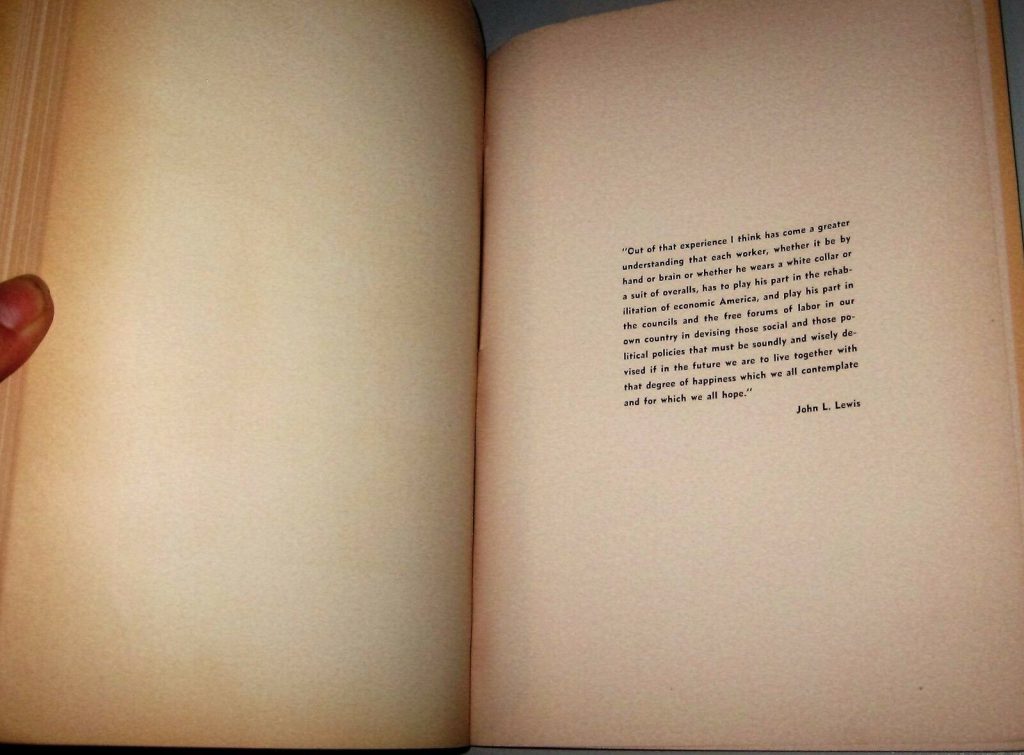
The Lewis Epilogue is on the 2nd last printed page of the 1941 Pisani edition. The last page has the Pisani publication information.
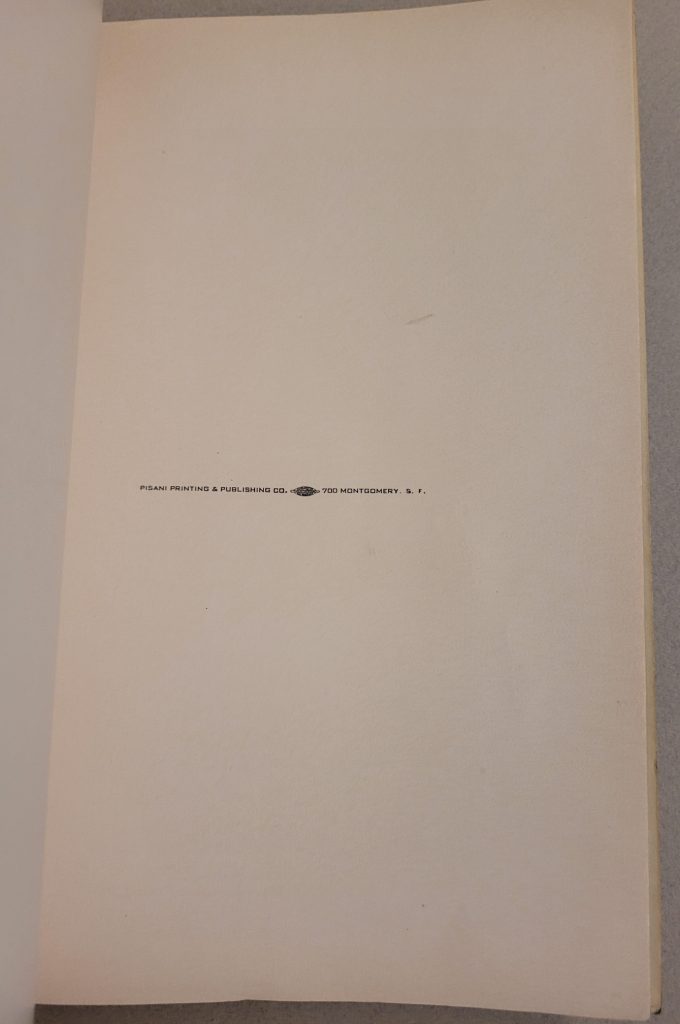
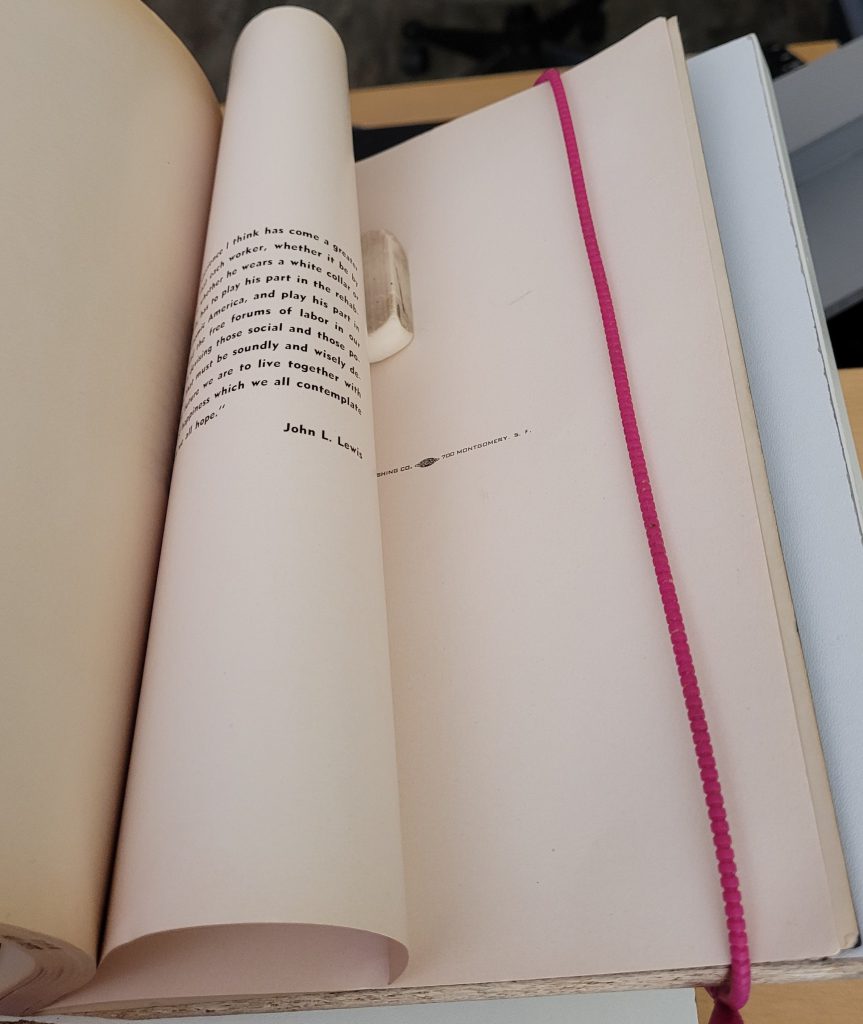
Examples with the Epilogue removed from the Pisani edition.
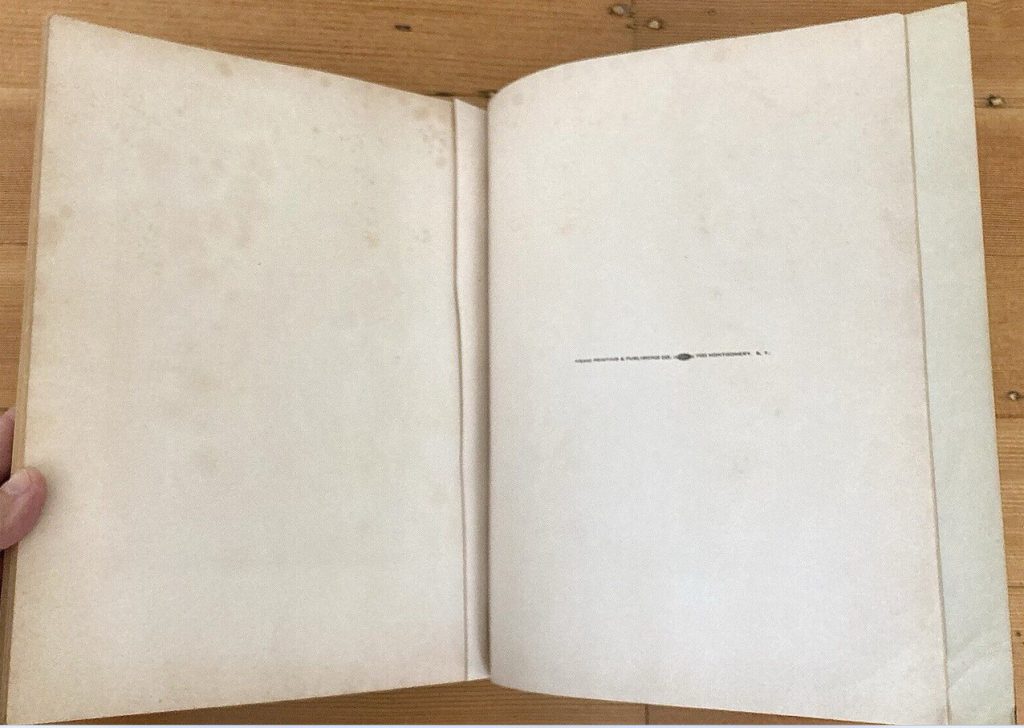
been cut out. Photo Credit: Zenaide
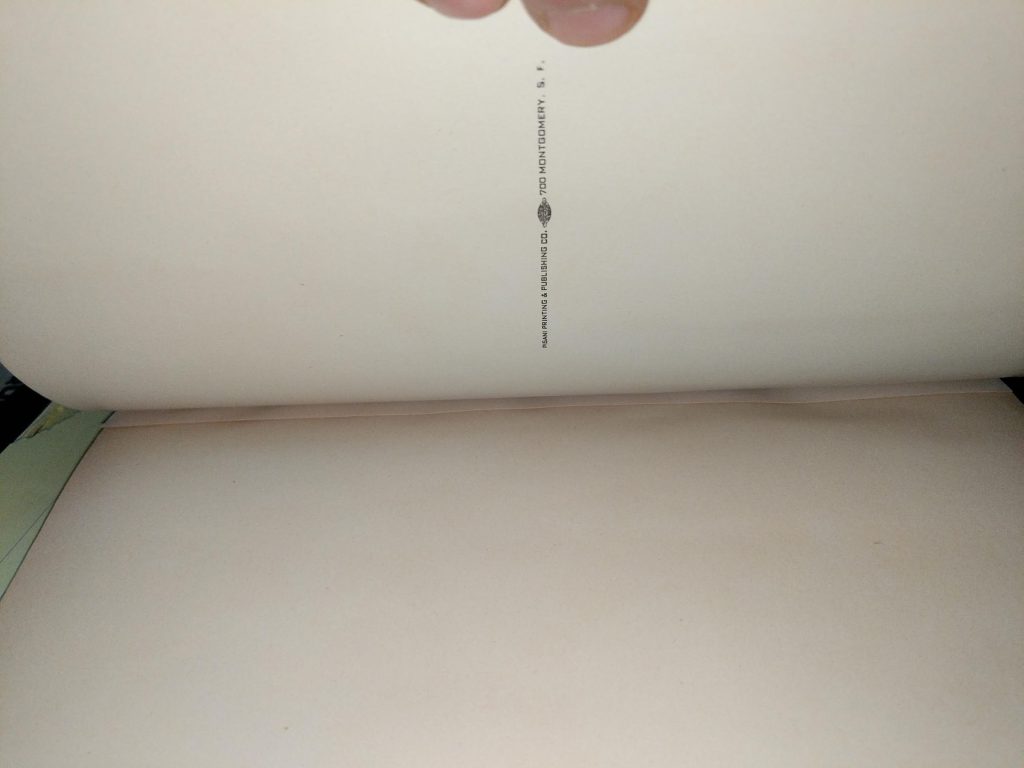
Photo credit: N. Lerek of 1984to2001
Conclusion:
The epilogue had not been printed with the 1st and 2nd editions ie the “handmade” editions with metal bindings. It was only printed in the stapled Pisani, 3rd edition of 1941. If it’s not in the Pisani edition, it has been cut out (I have not seen this very often).
COMMENTS
If you disagree with something on this page, have an improvement, or have a comment please contact me
wn at wordlessnovels.com
Any information used will be given a credit line.
